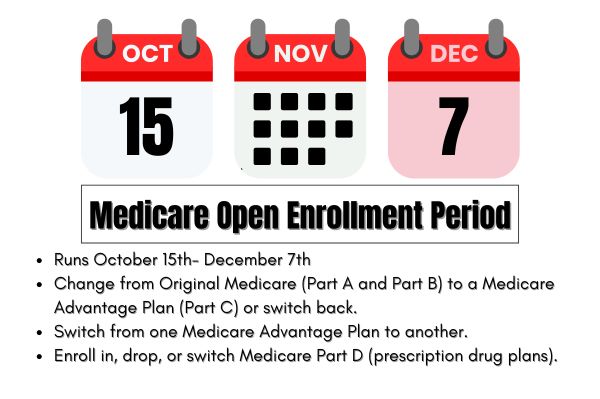Understanding Medicare Advantage Giveback Plans

Medicare Advantage plans are an alternative to traditional Medicare, combining Medicare Part A, Part B, and often Part D, along with additional benefits like dental, vision, and hearing coverage. These plans, offered by private insurers, come in various forms, including Health Maintenance Organization (HMO), Medicare plans, and Preferred Provider Organization (PPO) plans, making them a popular choice for those seeking a comprehensive medicare plan.
One of the standout features of Medicare Advantage plans is their potential for low or no monthly premiums, making them an attractive option for many beneficiaries. In fact, about 76.5% of enrollees choose plans with $0 premiums, which can lead to significant savings on medicare costs. These plans also provide team-based healthcare support, involving pharmacists and case managers to enhance patient care.
Medicare Advantage Giveback Plans, specifically, offer an additional benefit—reduced Medicare Part B premiums. This reduction can make a considerable difference in the overall cost of healthcare for beneficiaries, allowing them to allocate their savings towards other essential living expenses.
Key Changes to Giveback Plans in 2026
The Centers for Medicare & Medicaid Services (CMS) has announced several key changes to Medicare Advantage and medicare part d plans for 2026, aiming to simplify and improve accessibility. One significant change is the prohibition of certain supplemental benefits that do not aim to improve health for the chronically ill enrollees. This move ensures that all benefits provided are directly related to enhancing health outcomes and offer benefits for the chronically.
Another major change is the enhanced integration in dual-eligible special needs plans, which will now include a unified member identification system. This integration aims to streamline services and improve the overall experience for beneficiaries who are eligible for both Medicare and Medicaid services.
CMS has also adopted a list of excluded items deemed non-healthcare related, impacting the services offered in Medicare Advantage plans. These changes reflect a continued effort to focus on health-related benefits and ensure that Medicare beneficiaries receive the most effective and necessary care.
How to Qualify for a Giveback Plan
Qualifying for a Medicare Advantage Giveback Plan requires enrollment in both Medicare Part A and Part B. These plans offer additional savings on Part B premiums, so having both parts of Medicare coverage is crucial.
Eligibility for specific Giveback Plans depends on several criteria:
- Being enrolled in Medicare Part A and Part B
- Income thresholds that might impact eligibility
- Residency in a particular service area
- Meeting all criteria set by the insurance provider
Meeting all these criteria ensures a reasonable expectation of eligibility for the chosen Giveback Plan.
Benefits of Enrolling in a Giveback Plan
Medicare Advantage Giveback Plans can significantly reduce monthly Part B premiums, sometimes even bringing them down to zero. These savings can accumulate over time, noticeably lowering overall healthcare costs.
Beneficiaries often share how switching to a Medicare Advantage plan with the Giveback Benefit has significantly reduced their healthcare costs. Many seniors mentioned that these savings allowed them to allocate more funds toward essential living expenses, providing crucial financial relief, including their medicare benefits.
Moreover, Medicare Advantage Giveback plans frequently offer additional benefits such as dental and vision coverage, which traditional Medicare does not include. Since these special supplemental benefits can vary between plans, reviewing each plan’s offerings to ensure they meet your needs is important.
Comparing Giveback Plans with Traditional Medicare
Medicare Advantage Giveback plans offer notable advantages over traditional Medicare, especially in reducing out-of-pocket costs. They often lower or eliminate Part B premiums, providing significant savings. Additionally, Giveback plans typically include extra benefits that traditional Medicare does not cover, such as transportation, fitness programs, dental, vision, and hearing coverage.
Some beneficiaries worry about provider access. However, many Giveback plans feature extensive networks that may include preferred doctors. Reviewing each plan’s provider networks ensures your healthcare providers are covered.
In summary, Medicare Advantage Giveback plans often provide more comprehensive coverage and lower costs compared to traditional Medicare. The added benefits and extensive provider networks can greatly enhance the healthcare experience for beneficiaries.
Top States Offering Giveback Plans in 2026
Several states stand out for offering a wide range of Medicare Advantage Giveback plans in 2026. Pennsylvania ranks among the top states, reflecting increasing enrollment in these plans. The state’s diverse offerings provide beneficiaries with numerous options to suit their healthcare needs.
California is another key player, with a diverse selection of Medicare Advantage Giveback plans, making it a popular choice for beneficiaries. Texas also offers various Giveback plans that cater to different needs, making it a significant market for these plans.
Coverage options can vary significantly by location, so it’s crucial for beneficiaries to research local offerings to find the best plan for their needs.











